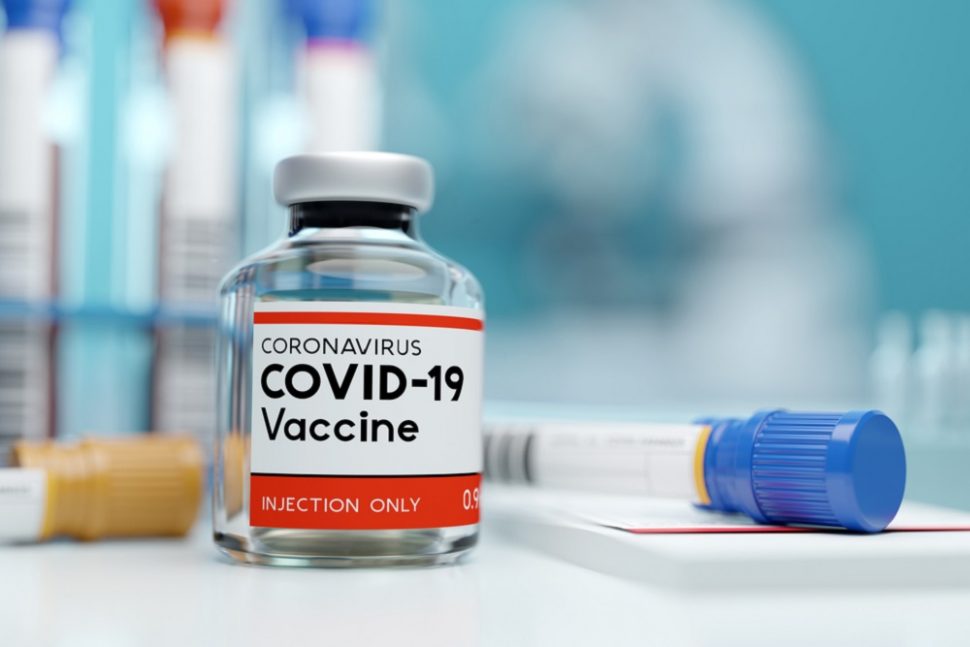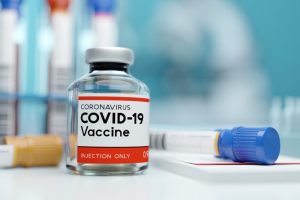Vaccines for COVID-19 are rolling out now, providing the world some much needed optimism for the coming year as we continue to combat the pandemic. However, environment, health, and safety (EHS) professionals have a lot of questions about the vaccine and what their role, if any, should be in organizational vaccination programs. Fortunately, we’re joined on today by attorney, safety professional, and trainer Adele Abrams who can help shed some light on some of the questions or concerns EHS professionals might have about complying with vaccination protocols.
In addition to today’s podcast, Adele Abrams will be presenting an upcoming webinar, COVID-19 Vaccine & Compliance: Unraveling Legal Complexities Surrounding Immunizations in Your Workplace, on January 28th, 2021 at 2 PM EST. You can register for the event right here.
Justin Scace: Hello everyone. And welcome to EHS on Tap. I’m your host, Justin Scace, senior editor of the EHS Daily Advisor. And we want to wish our listeners a happy new year and hope that you are doing all you can to keep yourselves and your workplaces healthy and safe amid the ongoing COVID-19 pandemic.
Now, speaking of COVID-19, the world has been offered a glimmer of optimism for the coming year in the rollout of vaccines to combat the pandemic. However, environment health and safety professionals have a lot of questions about the vaccine and what their role, if any, should be in organizational vaccination programs. Fortunately, we’re joined by an expert today who can help shed some light on these topics.
On this episode of EHS on Tap, we’re joined by Adele Abrams, president of the law office of Adele L. Abrams PC. Adele is an attorney, safety professional and trainer whose multi attorney firm has offices in Beltsville, Maryland, Charleston, West Virginia, and Denver, Colorado focusing on safety, health, and employment law nationwide. A frequent speaker at EHS Daily Advisor events, Adele is a certified mind safety professional, and she also provides consultation, safety audits and training services to MSHA and OSHA regulated companies. She will be presenting a webcast next week on January 28th, titled COVID-19 Vaccine and Compliance: Unraveling Legal Complexities Surrounding Immunizations In Your Workplace. And ahead of this presentation, we’re excited to hear some of her insights into the role of EHS in the fight against COVID-19 and their potential role in vaccination efforts. So Adele, thanks very much for taking the time to be with us today on EHS on Tap.
Adele Abrams: Well, thank you for having me.
Justin Scace: So the first question that I want to ask you, it’s a little bit general to COVID-19. There’s no federal COVID-19 standard yet. Perhaps maybe we’ll see one later on this year, although a handful of states have implemented emergency temporary standards. Now, how has this sort of a patchwork approach to this as a health and safety hazard, how has this impacted OSHA’s ability to address the disease as a workplace hazard?
Adele Abrams: Well, we’re about to have a new sheriff in town as we are recording this, the inauguration hasn’t occurred yet, but with the new sheriff in town, so to speak, I believe that federal OSHA will be enacting an emergency temporary standard in fairly short order. They are no longer going to be needing a nudge from Congress to do it. And there had been legislation introduced that would have supported OSHA doing a standard quickly, as well as MSHA, the Mine Safety and Health Administration. But neither of those bills obviously passed. And the problem is in the wake of the inaction at the federal level that we’ve experienced through 2020 and into 2021, as you noted the states have jumped in to fill the void. And typically as both an employment attorney and a safety and health attorney, I look first to the state OSHA states. And currently there are four of them who have adopted emergency temporary standards of their own: Virginia, Michigan, Oregon, and California. And even Cal OSHA is continuing to tweak their standard because of industry opposition to it.
So these ETSs or emergency temporary standards were only intended to be in place for six months. And clearly this is dragging out a whole lot longer than that. But the problem is that they have non harmonious provisions. And to your point on the vaccine, these emergency temporary standards in these four state plan states were all enacted before we had a vaccine that had been cleared for public administration by the FDA. And so they don’t speak to the vaccines at all. They are predicated upon social distancing, different levels of face coverings or actual respiratory protection, doing an analysis of the workplace and triaging it into very high, high, medium, and low risk work sectors, and then having different provisions.
But it is very much a crazy quilt where in Virginia, the rule kicks in if you have 11 employees in terms of a lot of documentation provisions. Oregon, it’s 25 workers. And so certainly this is an area that screams out for some kind of overarching federal rulemaking on this, so that we have that. And I might add, we also have state governments jumping into the breach, even in federal OSHA states. New Jersey being a good example where the governor there enacted workplace safety provisions. And because New Jersey is a federal OSHA state, they are having their health department do the enforcement and the workplace, which is not a role that they’re really intended or trained for.
And so where things stand right now to sum up, none of the state plan rules, none of the state policies, and there are about 10 states beyond those four state plan states that have some level of workplace safety requirements now dealing with COVID, they’re just not enforced by OSHA. But none of them mandate vaccines at this point, nor does federal OSHA. They are recommending it and I’m sure we’ll discuss this a little bit further, but the bottom line is an employer at this point cannot point to OSHA and say, we’re having to require this because OSHA is telling us we have to make you get it.
Justin Scace: Right. Right. Absolutely. So moving along to talking about the COVID-19 vaccine in particular, administration of the vaccine, at least as it relates to the workplace, how employers are approaching it, it’s widely viewed as a human resources issue because of the personnel issues involved and the private health information involved, that sort of thing. But what role must EHS executives, managers, staff, what role must these folks play in the rollout of workplace vaccine programs and policies?
Adele Abrams: Well, this is one of those areas where as the saying goes, it takes a village. And definitely HR and the EHS professionals are going to have to work and play well together because there are definitely overlapping considerations here. For example, from the EHS professionals’ perspective, if a worker objects on safety grounds to getting the vaccine, that is protected activity under section 11C of the OSH Act. And at the same time, the HR professionals are looking down the checklist from the EOC saying can we require this under the ADA? Can we require this based upon religious objections that might arise under Title VII? Ethnicity objections even can come into play at times, if there are people whose genetics may put them at greater risk for complications, and there are a lot of genetically oriented diseases. So that raises not only ethnicity considerations under Title VII, it also raises GINA, which is the Genetic Information Nondiscrimination Act.
Beyond that, it’s just a witch’s brew. You’ve got HIPAA issues that can come up. If you’re administering things through an employee assistance program, in some way, you’re going to have to abide by the EEOC’s guidance for that. And going back to the EHS people, they’re the ones doing the triage in the first place, determining which risk levels workers are at from an occupational health perspective. And then they’re going to have to go back to HR and say, okay, we have this group of workers who really meet the definition for group A or group B. And then we have this other group of workers who really are not essential. I hate to say it that way, but they’re not interfacing with the public, they’re under 65. And so even there, it’s going to be a bit of a nightmare because you are essentially creating a roadmap for disparate treatment among different classes of workers. And you’re doing it in some cases by their job classifications.
In other cases, you’re doing it by their age. Although we always think of the Age Discrimination and Employment Act as applying and protecting only people over 40. And certainly that comes into play here because some older people, maybe with compromised immune systems may have some issues about the vaccine. We really don’t know yet. But at the same time, some of the state non-discrimination laws, Washington, DC is a good example. They protect you from any age discrimination. So if you’re making it available to the boomers and you’re not making it available to the millennials, and you can’t hang your hat on some overarching federal or state policy, then you could have exposure for discrimination claims as well. As I said, it goes in a lot of different directions.
Justin Scace: Wow. Yeah. Very complex issue there. Now, a particular question that comes up a lot in terms of the COVID-19 vaccine and employers in general, there are a lot of questions surrounding whether an employer can mandate COVID-19 vaccinations for employees. Now you mentioned that just briefly a little while ago, but could you tell us a little bit more about what the facts are on this issue and what are the implications for our EHS professionals in our audience today?
Adele Abrams: Yeah. This again, as the British would say, it’s a sticky wicket. First of all, as I said, there’s no law right now requiring the vaccine. So now the employer is having to take a step back and decide, are we going to mandate this on our own, or are we going to encourage it? And how are we going to encourage it? And one of the sticking points here, even though I know conventional wisdom is out there saying OSHA and the EEOC have said, it’s okay to mandate the vaccine. Again, we’re going to have a change in administration and there’s no guarantee that the new administration’s OSHA and EEO policies on vaccines are going to be the same as what we’re currently under, because they were not done through a rulemaking. And so they are not binding. They can be changed without any notice even.
The second issue, and this is huge, and I don’t hear enough people talking about this is that this vaccination or this vaccine only has been cleared for emergency use by the FDA. And so this really, in my view, complicates vaccine mandates. We don’t have the long-term trials and efficacy demonstrated. We are having people having anaphylactic reactions to this and other reactions. And so this in my view is quite different from say the hepatitis B vaccine that has to be offered to healthcare workers and other exposed workers under OSHA’s bloodborne pathogen standard, their workers, that even there can sign a declination. So the OSHA rule for that does not mandate it. It’s just recommended for those highly exposed sectors, but it’s a lot tougher to mandate something that hasn’t really jumped through all the hoops that normally you would and every month or every couple of weeks, it feels like another vaccine is being rolled out. So we really don’t know what we don’t know at this point. And that to me gives me a little bit of pause in terms of how the employers’ mandate might be dealt with.
Some other questions that come up in terms of the vaccine mandate is, are you able, for example, under the ADA, to show that this vaccine is going to be consistent with business necessity? If you’re a doctor or a nurse, it probably is. If you’re a secretary working remotely, you’ve got a harder showing there for sure. And if you cannot show that your mandated vaccines are job related and consistent with business necessity, then you’re going to have to allow for people to opt out without retaliation. And again, that goes back to section 11C of the OSHA Act as well as the anti-retaliation provisions under the ADA and Title VII et cetera. You have to recognize, in a voluntary situation that the screening questions are going to be voluntary as well. And there are going to be situations where an employee may get the required vaccine from a third party who does not have a relationship or contract with the employer. So how are you going to chase down that information?
And then of course, if you are administering the vaccine onsite, any of the medical information that you get from the employee in the course of your vaccination program, you’re going to have to treat as confidential medical information, again, protected under HIPAA. But just to add another angle to this. What I hear questions from my clients is, well, can we incentivize the vaccine? Okay, we can’t mandate it really, but can we dangle something in front of them that will make them bite at it. A gift card, for example. And the danger there is that that has implications for economic coercion and from a medical ethics perspective, those administering the vaccine might have pause if a worker said I really don’t believe in this. I’m scared to death to get this. I think I’m at risk, but they offered me a $100 gift card and I need that to pay my electric bill. In those situations, a doctor or a nurse or other licensed healthcare professional could refuse to administer the vaccine.
So you really need to consider that because if you are allowing a lot of we’ll call it the chiefs and the salary people to opt out of the vaccines, and you’re trying to mandate it or coerce it through incentive programs for your hourly workers, even though both sets of workers might have the same objections to the vaccine, that is where you could end up getting into some trouble. And I’ll add one more issue on here.
We have a fissured workplace. I’m sure you’re familiar with that, where we have a lot of multi-employer work sites. We have your own direct employees and then you might have temporary workers from a staffing agency. And especially with COVID, that is true because if a lot of your regular people are down for the count, you might be bringing in people to a manufacturing facility from a temp agency, and then you might also have contractors or subcontractors. And the new Department of Labor rule redefining who is an independent contractor, is actually going to kick more workers into that non-employee classification. Well, what’s the big takeaway on that is that if you administer the vaccine to one of these third parties, a subcontractor or a temporary worker, and they have a reaction, you don’t have workers comp coverage there. You’re talking tort exposure for personal injury or wrongful death. So that is a big deal.
For your own workers, if they have a complication from the vaccine that is likely going to be covered under workers’ comp, and you’re also going to have to pay for the vaccine if you’re mandating it. You’re going to have to pay the worker for the time that it takes for them to do that even if it kicks them into some overtime. And you’re going to have to consider whether to give them any kind of paid time off since many people after the second shot, need to take a day or two. And that again is a way of encouraging the vaccine acceptance by workers. But if they know that they’re going to have to take a couple of days of unpaid leave after it, that is going to be a discouragement.
Justin Scace: So a lot of tight ropes to walk here, a lot of sticky wickets as you called them. What’s your biggest piece of advice that you would impart to EHS leaders when it comes to this topic right now?
Adele Abrams: Well, the first thing I would tell them is look at your own data and look at the data to the extent that’s available in similarly situated businesses, get a handle on what your rates are. And then because we don’t have, as I said, any kind of overarching federal guidance on this, you can look to one of the state laws. Virginia is quite good, and they give examples of different positions, they give examples of different industry sectors in terms of whether they are at low, medium, high, very high risk. And they give examples as well of the types of positions. And so you can take that as a bit of a framework for developing your own vaccination program. And again, you’re going to have to overlay that with what is going on at your state level. Because again, I hate to keep saying this, but because we don’t have a federal vaccination administration program, they’re making the vaccines available in terms of the logistics to the states. But then the states are controlling who was going to get the vaccine first, what industries they’re classifying as essential.
And that is another war that I’m seeing being fought, where every industry wants to be considered essential because it gives them more latitude in terms of remaining operational. But with that bonus of being declared an essential service, may come the obligation to consider more stringent vaccination programs or to include more workers in those programs. So there there’s a lot of work that has to be done I think upfront before a company can launch its own program. And certainly from an EHS perspective, the more you’re doing this on site, you have to consider the pros and cons. You’re not sending people to a clinic where they might be exposed and maybe carry it back into the workplace before the vaccine takes effect.
But if you administer it onsite, you have to make sure that it’s done safely. You have to make sure that the people that you’re bringing in to do it, you don’t want to just give the supervisor who happens to be on disability a needle and say, have at it and jab everybody. You have to really have somebody who’s going to be able to observe the workers after they get the vaccine to make sure they don’t have any untoward effects. And in some cases it’s 15 minutes, but if you have some certain underlying conditions, you may have to be observed for 30 minutes. So now you’re thinking about where are these people going to hang out? If it’s winter in Maine, you can’t exactly have people hanging out in the parking lot to see if they fall over from the vaccine. So again, a lot of logistical and planning work needs to be done before an employer can independently, I think, launch a vaccine program.
Justin Scace: Great, great, good advice. Now you’re going to be presenting more info on this topic in an EHS Daily Advisor webcast sponsored by Avetta on January 28th next week. So what other aspects of this issue in addition to the issues we’ve covered here, will you be covering in this presentation?
Adele Abrams: Well, one of the issues we haven’t already addressed is how any vaccine workplace program is going to intersect with collective bargaining agreements and unionized workers. Because again, many of those industries are considered either critical infrastructure or essential workers, whether they are hospital workers. You have quite a few unions in the hospital setting. Teachers, you have a lot of teacher’s unions. And then you have my buddies, the teamsters, and some of the others who are fairly heavily ingrained in the logistics and transportation sector, moving essential materials as part of the supply chain. And so those are going to be some of the industries that are going to be popping first in terms of mandated vaccines. And it’s going to be very interesting to see whether the NLRB, the National Labor Relations Board under President Biden puts out some guidance on that, because definitely mandating a vaccine is considered determined condition of employment, and it can not be unilaterally imposed without either collective bargaining or some kind of consideration for your existing workers. So that is going to be, I think, a real challenge.
The other, as I said, is having this hit at the same time as the new Department of Labor independent contractor rule, which literally just came out in January, 2021. It may be legally challenged, probably will be, but how much control are you going to have over workers? If you mandate a vaccine, you may be interfering with one of the tests that might otherwise enable you to consider those people to be independent contractors and not have to pay FICA and everything else. So this is going to be a tight rope, as you said, that employers are going to have to walk in determining whether they want people to be considered employees, or they want them to be considered independent contractors under the new test, because that will give them a bit more control over mandatory vaccination programs.
Justin Scace: Great. Well, thank you. It’s a very timely and important topic in health and safety, and we’ll all be looking forward to learning even more next week during your webcast. So thanks again, Adele for joining us today on EHS on Tap.
Adele Abrams: Thank you. Everybody stay safe and be well.
Justin Scace: Yes. Yes. So to learn more from Adele Abrahams about how EHS can make an impact on organizational COVID-19 vaccine programs, register for her upcoming webinar, COVID-19 Vaccine and Compliance: Unraveling Legal Complexities Surrounding Immunizations In Your Workplace, taking place on Thursday, January 28th at 2:00 PM Eastern Time. You can join this event today by navigating to our EHS Daily Advisor events page or via the links provided on this podcast episode’s EHS Daily Advisor webpage. So, we hope to see you there. And as always keep an eye out for new episodes of EHS on Tap and keep reading the EHS Daily Advisor to stay on top of your safety and environmental compliance obligations, get the latest in best practices and keep your finger on the pulse of all things related to the EHS industry. Until next time, this is Justin Scace for EHS on Tap.
 Adele Abrams, Esq., CMSP, is an attorney, safety professional and trainer who is president of the Law Office of Adele L. Abrams P.C. in Beltsville, MD, Charleston, WV, and Denver, CO, a multi-attorney firm focusing on safety, health and employment law nationwide. Adele is a certified mine safety professional and she also provides consultation, safety audits and training services to MSHA and OSHA regulated companies. Adele Abrams, Esq., CMSP, is an attorney, safety professional and trainer who is president of the Law Office of Adele L. Abrams P.C. in Beltsville, MD, Charleston, WV, and Denver, CO, a multi-attorney firm focusing on safety, health and employment law nationwide. Adele is a certified mine safety professional and she also provides consultation, safety audits and training services to MSHA and OSHA regulated companies.
Adele is a regular columnist and podcaster (“Ask the SafetyLawyer”) on legal, employment, mine and occupational safety/health issues, and is co-author of several books related to mining, construction, employment law, and occupational safety and health. She is a member of the Maryland, DC and Pennsylvania Bars, the U.S. District Courts of Maryland, DC and Tennessee, the U.S. Court of Appeals, DC, 3rd and 4th Circuits, and the United States Supreme Court. She is a graduate of the George Washington University’s National Law Center, and earned her B.S. in Journalism from the University of Maryland, College Park. Her professional memberships include the American Society of Safety Professionals, National Safety Council, the National Stone, Sand & Gravel Association, Associated Builders and Contractors, the Industrial Minerals Association-North America, and the American Bar Association. In 2017, she received the NSC’s Distinguished Service to Safety Award. She is a multiple recipient of the ASSP’s Safety Professional of the Year Award. |
EHS on Tap is an environmental, health, and safety podcast by BLR’s EHS Daily Advisor. On each episode of EHS on Tap, our host will discuss emerging legal, regulatory, and policy issues with industry experts and the impacts to everyday safety and environmental professionals. EHS on Tap topics run the gamut of contemporary issues facing EHS managers and professionals today.
Download the podcasts on iTunes here, and also be sure to visit our SoundCloud page for a full listing of all of our episodes!






